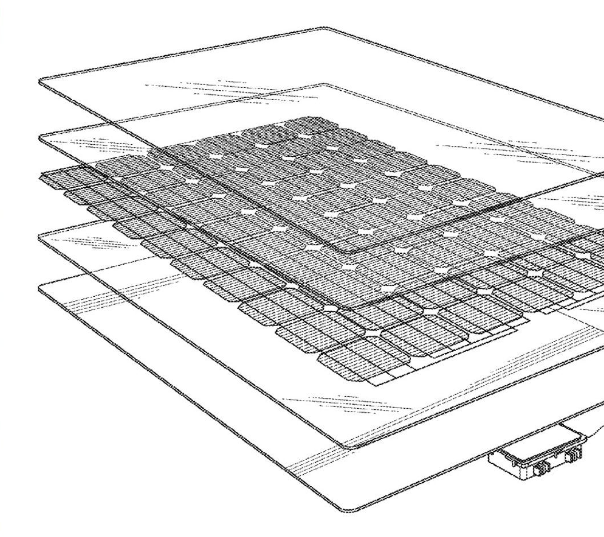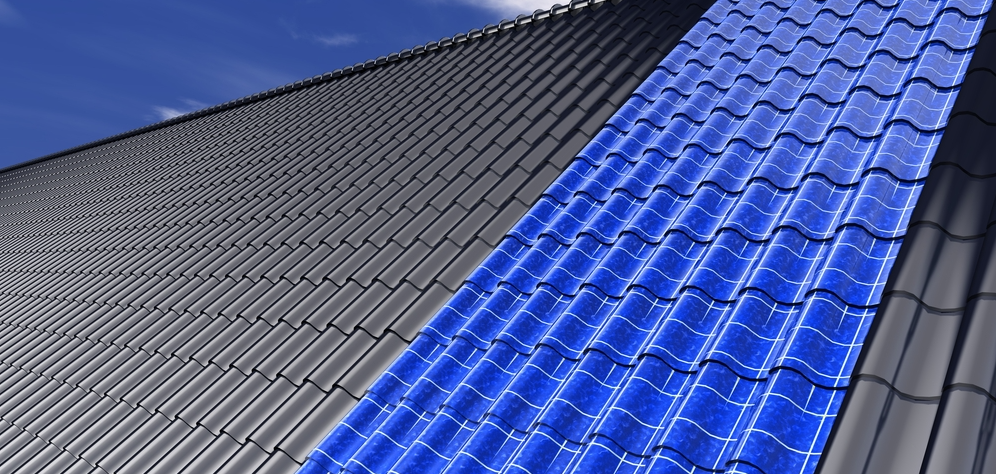Solar roof tiles are photovoltaic panels that are designed to look like traditional roofing tiles. They are installed on the roof of a building and convert sunlight into electricity that can be used to power the building. Solar roof tiles are a type of building-integrated photovoltaic (BIPV) technology that can replace or augment traditional roofing materials, such as asphalt shingles or clay tiles.

Solar roof tiles are made from a range of materials, including tempered glass, plastic, and silicone. They come in various shapes and sizes, and can be custom-made to match the style and color of the building's existing roofing tiles. This allows them to blend seamlessly into the overall aesthetic of the building, making them a popular choice for homeowners who are looking for an energy-efficient solution that also enhances the appearance of their home.
Solar roof tiles have several advantages over traditional solar panels. For one, they are more aesthetically pleasing, as they blend into the roof of the building and do not detract from its overall appearance. They are also easier to install, as they can be installed directly onto the roof deck without the need for additional mounting hardware. This reduces the cost and complexity of the installation process, making solar roof tiles a more accessible and affordable option for many homeowners.
In addition to generating clean, renewable energy, solar roof tiles also provide other benefits. They can increase the energy efficiency of a building by reducing its reliance on the grid, and they can help to lower monthly electricity bills. Solar roof tiles are also durable and long-lasting, and are often backed by warranties that last for 25 years or more.
One of the main challenges of solar roof tiles is that they can be more expensive than traditional solar panels. However, the cost of solar roof tiles has been decreasing over time, and many homeowners are able to offset the cost through government incentives, tax credits, and rebates. In addition, the increased energy efficiency and lower electricity bills provided by solar roof tiles can help to make them a cost-effective solution over the long term.
Another challenge of solar roof tiles is that they are not suitable for every building. In some cases, the roof of a building may be too steep or too shady, or may not receive enough sunlight to generate a significant amount of electricity. In these cases, traditional solar panels may be a better option.

Despite these challenges, the popularity of solar roof tiles continues to grow, as more and more homeowners seek out energy-efficient solutions that also enhance the appearance of their homes. With advances in technology and a growing demand for renewable energy, it is likely that solar roof tiles will become even more accessible and affordable in the future.
In conclusion, solar roof tiles are a type of building-integrated photovoltaic technology that provide a range of benefits, including clean, renewable energy, improved energy efficiency, lower electricity bills, and a more aesthetically pleasing appearance. Although they can be more expensive than traditional solar panels, the cost of solar roof tiles has been decreasing over time, and many homeowners are able to offset the cost through government incentives and other programs. As demand for renewable energy continues to grow, it is likely that solar roof tiles will play an increasingly important role in meeting our energy needs while also enhancing the appearance of our homes.
Previous: None.
Copyright:@2020-2021
Comments Please sign in or sign up to post.
0
0 of 500 characters used